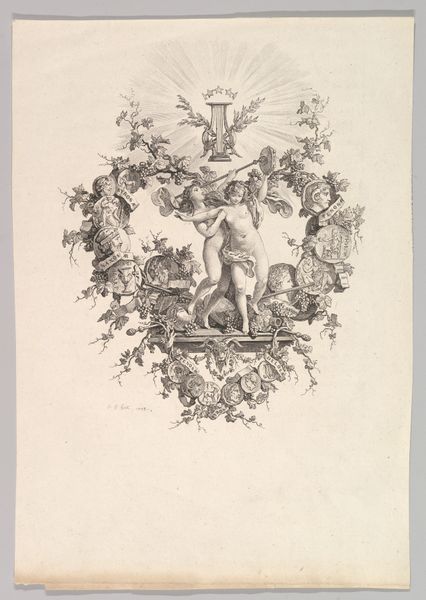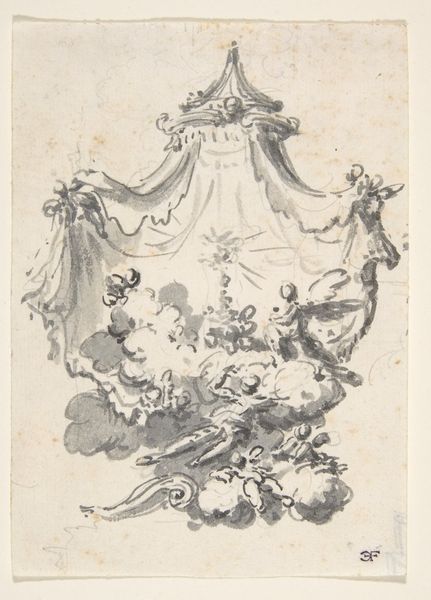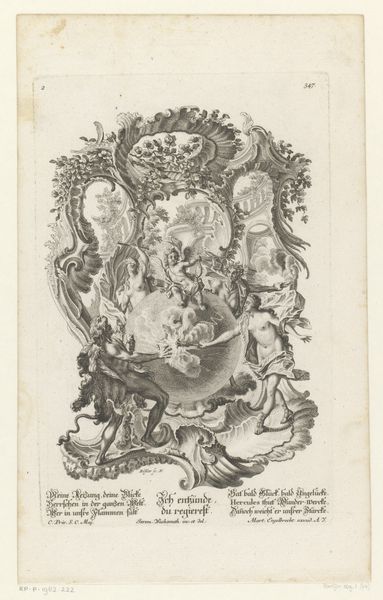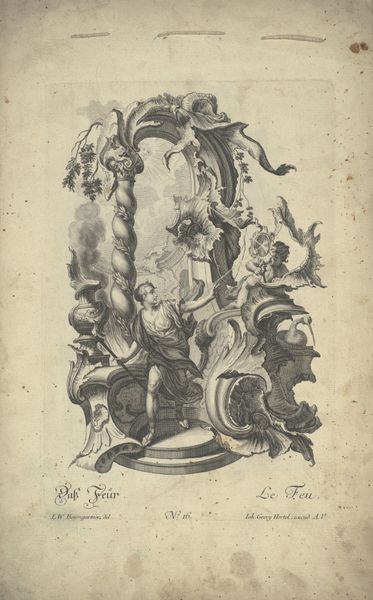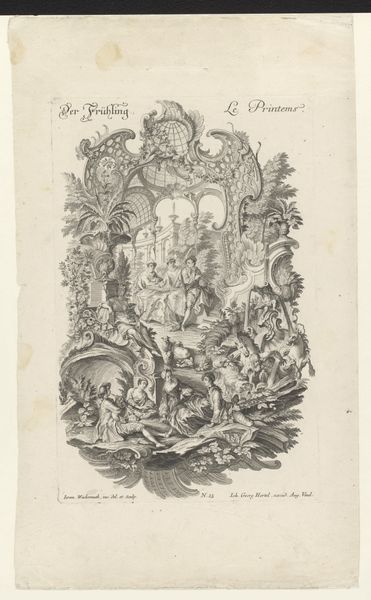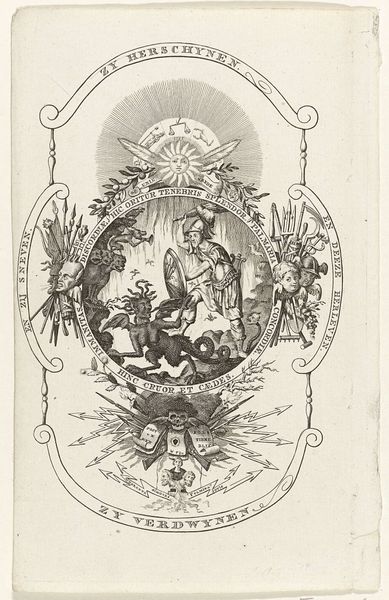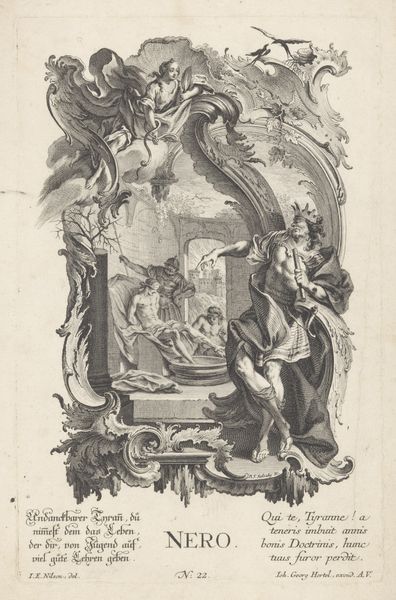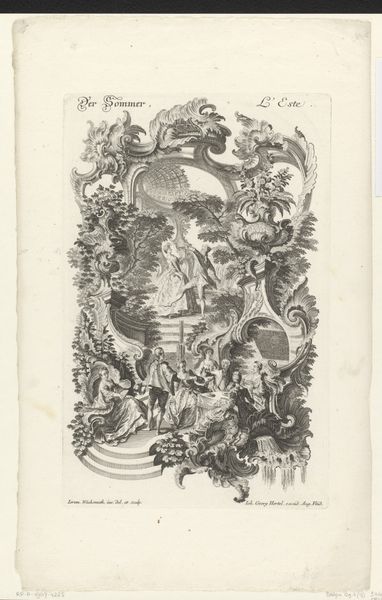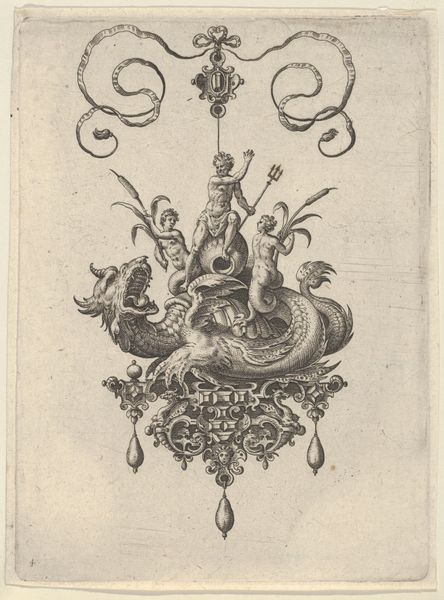
drawing, print, engraving
#
drawing
#
neoclacissism
#
allegory
# print
#
engraving
Dimensions: sheet: 13 5/8 x 9 3/4 in. (34.6 x 24.7 cm)
Copyright: Public Domain
Curator: Look at this fascinating engraving. Titled "Vignette with Hephaestus and Putti", it was created in 1779 by Jean-Baptiste Huet I and is currently held at The Met. It exemplifies Neoclassical allegory through printmaking. Editor: It strikes me as elaborate, even a little imposing for a vignette. The gray scale is well balanced, creating subtle gradations of dark and light that give a sense of depth despite being a printed line drawing. Curator: It certainly embodies the period's penchant for intricate, allegorical representation. It likely functioned as a decorative element in a larger work, perhaps a book illustration or even a preparatory study. Hephaestus, the Greek god of metalworking, sits prominently at the top, surrounded by putti. Editor: And what an interesting contrast between the muscular god and the plump, playful cherubs. Hephaestus is the apex, dominating the eye. The symmetry in its entirety lends a balanced, controlled, almost formal quality. It invites prolonged investigation. Curator: The print utilizes a whole vocabulary of neoclassical iconography to likely promote arts and trades and a connection between noble patronage. It signifies power, knowledge, perhaps an emerging awareness of the industrial potential simmering within that time frame. Editor: Do you think there’s something in the lines themselves, in their relative rigidity and intentionality that underscores this Neoclassical feeling? This style values clarity, isn't about gestural expressiveness at all. Curator: Exactly. It rejects the emotional fervor associated with the Rococo and seeks to return art to more "rational" virtues which is why there are some art historians that characterize the work as sanitized in the service of Empire. Editor: Regardless of my interpretation, I must say the detailed quality of lines pulls your eye again and again to smaller facets of design, like those small medians in the design; an enduring monument for anyone with an inclination toward visual thinking. Curator: It allows you, and encourages you, to become completely involved in the history, the culture, of the later decades of 1700's. Editor: A real conversation piece!
Comments
No comments
Be the first to comment and join the conversation on the ultimate creative platform.
